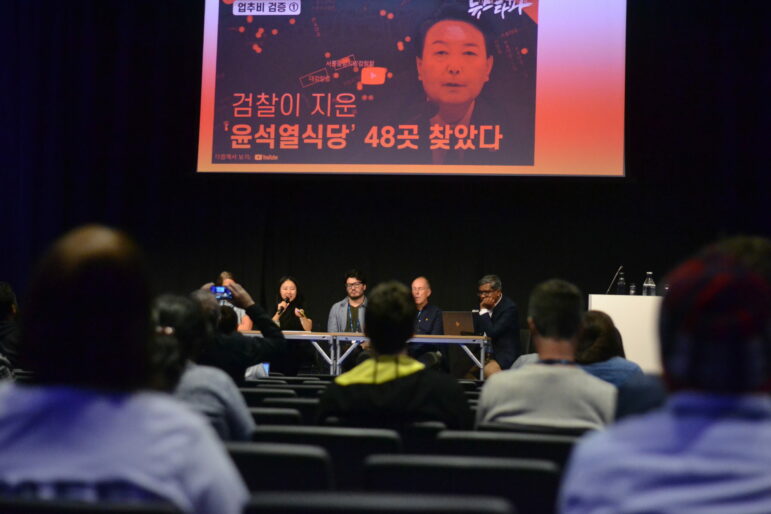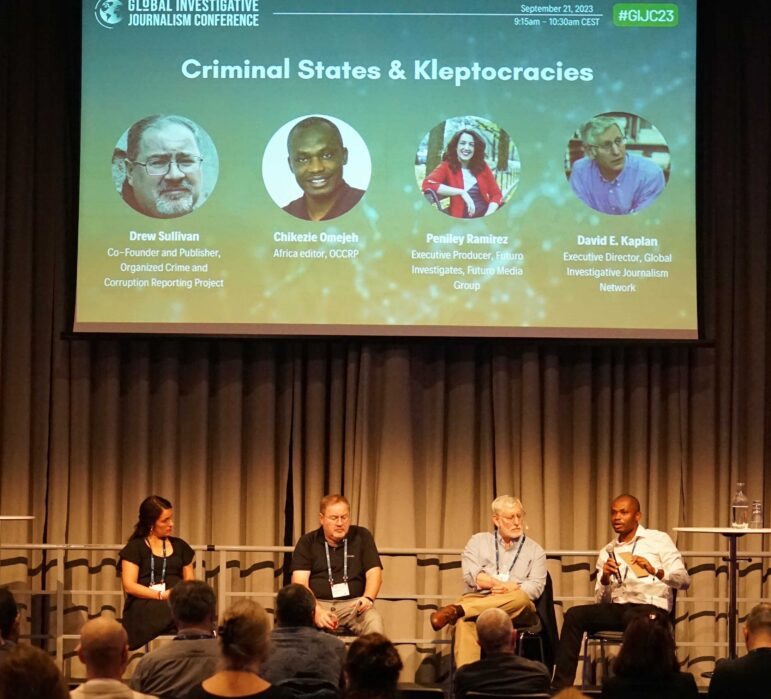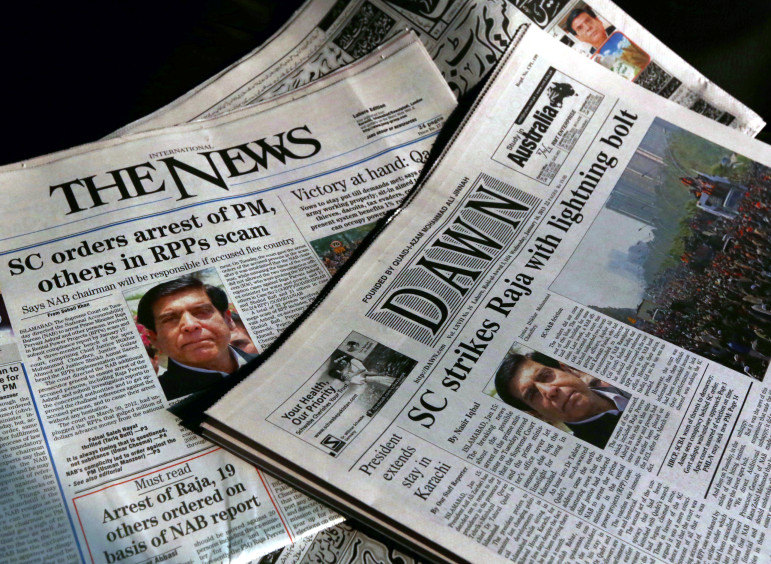

Holding Big Fish Accountable: How to Uncover Corruption
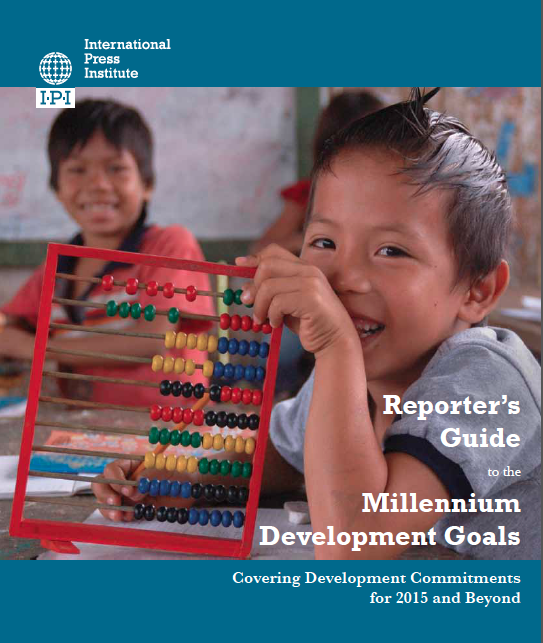 Part 15 of a series GIJN is excerpting from the Reporter’s Guide to the Millennium Development Goals: Covering Development Commitments for 2015 and Beyond, published by the International Press Institute.
Part 15 of a series GIJN is excerpting from the Reporter’s Guide to the Millennium Development Goals: Covering Development Commitments for 2015 and Beyond, published by the International Press Institute.
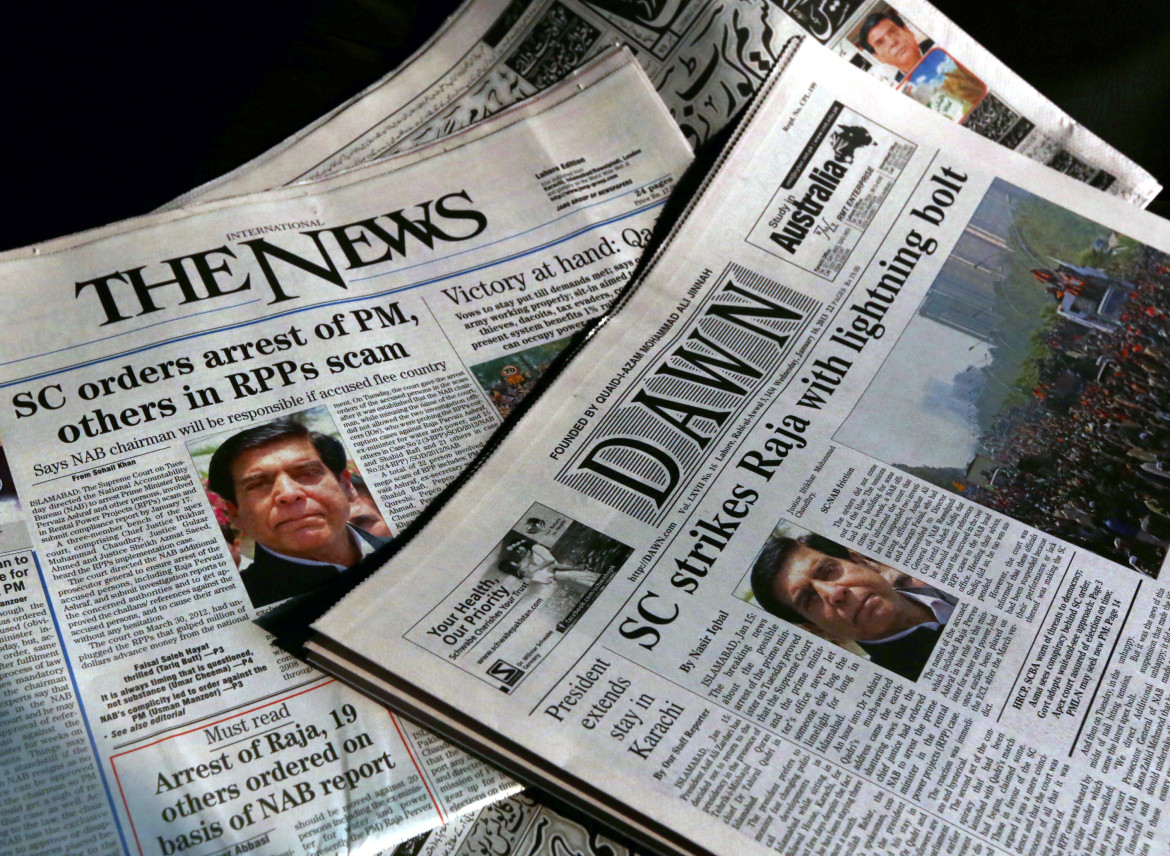
2013 ordering the arrest the Prime Minister Raja Pervez Ashraf for alleged involvement in corruption. EPA/Omer Saleem.
In a 2011 Transparency International survey, more than 3,000 business executives from around the world were asked to assess the effectiveness of various approaches to weeding out corruption. The result: nearly half (49%) indicated that investigative journalism played a critical role. Respondents from Pakistan (73%) and Brazil (79%), countries where the press reports fiercely on suspected acts of corruption, placed particular faith in the media’s ability to uncover wrongdoing.
Why did the participants feel so strongly that journalists can help? To answer this question, it is important to remember that rampant corruption in less-developed regions of the world is largely due to a lack of transparency and accountability. Power is concentrated in just a few hands, and statutes promoting the work of watchdog institutions are often toothless. The elite consider themselves above the law—which otherwise exists to empower common citizens—and oppressed classes come to accept this evil as a societal norm. In such doom-and-gloom realities, it is journalists who are left with the manifold task of guarding the public good.
Corruption in the developing world is, in a word, endemic. Corruption harms economic fairness: in the same Transparency International survey, 27% of respondents said they had lost business contracts to competitors who had engaged in bribery. Executives from developing countries—Malaysia (50%), Indonesia (47%), Mexico (48%), Pakistan (42%) and Egypt (41%)—reported such bribery as particularly detrimental. Chunks of money that should or could be used to benefit society—from foreign aid and loans, to the revenue raised by burdening the poor with indirect taxes—flow, instead, into the pockets of the decision-makers and their business allies.
This alarming situation calls for journalists to play an extraordinary role in highlighting corrupt practices. To be sure, this task is a challenging one, particularly in developing countries, where Freedom of Information (FOI) legislation may be non-existent or highly ineffective. Moreover, in many cases, those who work to expose wrongdoing may put their lives at risk.
But where there is a will there is a way. Indeed, there are various tools that journalists can use to help stamp out corruption.
Spotting Corruption
Despite efforts by those involved to cover their tracks, corruption “speaks” whenever and wherever it is committed. Journalists need to be aware of this language. If a contract is awarded in undue haste or with significant delay, there is something wrong. If a license is issued without due procedure, money must have changed hands. When someone gets rich overnight, there has to be a reason. If development work is accelerated, there are likely some big businesses trying to invest in decision-makers in order to win favor. Journalists should read the signs and dig for answers.
There are several techniques journalists can use to spot potential wrongdoing; these include checking budget books and official documents, collecting court records, analyzing paper trails, and conducting investigative interviews. However, for journalists in the developing world, making use of these tools is sometimes difficult, given resource constraints, and pressing deadlines imposed by understaffed editors who often demand that reporters produce copy on a frequent basis. Nevertheless, there are ways to overcome most challenges.
Cultivating Sources
Initially, journalists must learn the art of cultivating good sources. By looking around carefully, such individuals can be found within the bureaucracy, and often the best sources are government officials who witness every step of corrupt acts. Some officials, in fact, may have even tried in vain to intervene, and once they are won over, these officials can aid in the struggle to bring the truth to light.
Reporters need to know the right people in the right places, so it is important to form working relationships with lawmakers and get acquainted with organisations promoting transparency and accountability in different sectors. By making the right connections, getting official documents quickly is much easier. And a journalist with a good reputation will have whistleblowers running to him or her, rather than the other way around.
Getting the Information Required
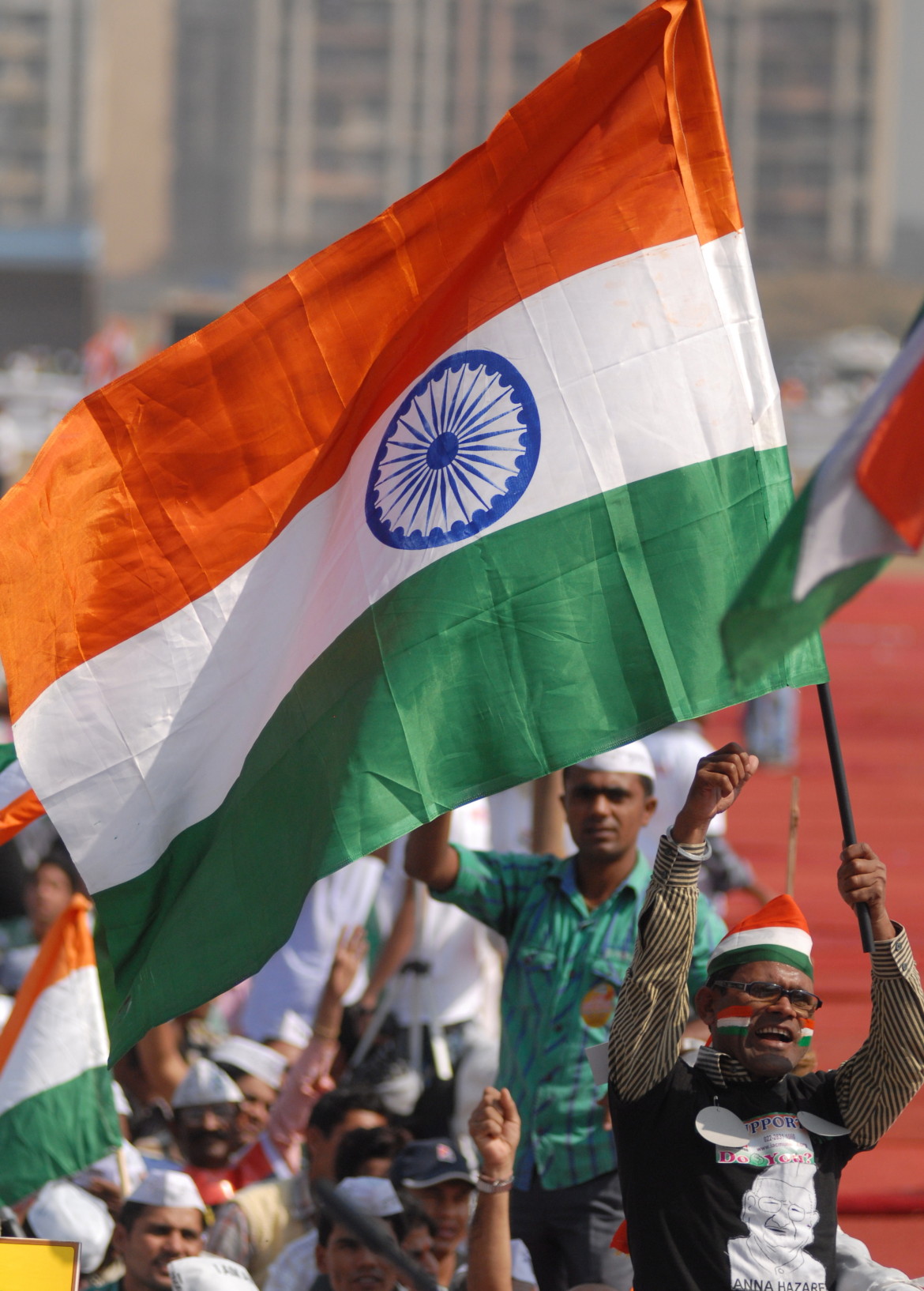
corruption activist Anna Hazare wave the Indian national flag and shouts slogans during a protest in Mumbai, India, in Dec. 2011. EPA/Divyakant Solanki.
Skill is required to obtain the information needed. By learning to read people’s expressions and actions, a journalist can identify the best sources more quickly. For example, sources who speak more during a given interaction generally have less to reveal, so approaching the quieter ones first tends to be more fruitful. Avoid officials who are often frequented by journalists: the most valuable sources shy away from meeting reporters and require people to win their trust.
Winning trust is not easy, though. Being prepared before any interview with a potential source is vital. Knowledge of the source’s career, character, and current position gives the journalist an advantage, and showing an interest in the person, sharing a cup of tea and a chat along with a little bit of flattery—maybe briefly complimenting the official’s good work—can make them feel more comfortable in eventually opening up.
A potential source may be uncomfortable in sharing important information during the initial meeting, but with gentle encouragement, over time, small pieces of information will start to appear. Explicitly asking for news and overtly taking notes may alarm a potential source, so the journalist should let the source lead conversation without interrupting with questions, and simply try to remember what is said. A patient listener will reap the rewards.
With the passage of time, the official will become the journalist’s eyes and ears in a department or institution, and protecting that source’s identity is critical. One effective way to do this is by throwing observers off the track. For example, in most cases of corruption, more than one government department is involved. To divert the attention of those investigating, it should be suggested, when referring to a source, that the obtained information was disclosed anonymously by another department.
Looking for Alternative Sources
As there are no effective FOI laws in many developing countries, lawmakers can also help to acquire desired information. Often, these individuals are authorized to seek information from any department unless it is classified. A journalist should seek out like-minded legislators, who can access official records denied to reporters. And, while some information is public, the journalist hunting down an exclusive story may want to cultivate a source that liaises between departments and is privy to details before other departments are.
In addition to working with government officials, journalists can also approach those whose interests are hurt by means of a corrupt deal. In many cases, the latter may even approach the media for help in bringing down their competitor. A journalist should listen to these individuals patiently—even when the claims seem exaggerated—and should request complete documentation of the claim. If they truly want to highlight the case in public, they will provide whatever is needed.
Here, it is critical to employ analytical skills. Sifting the fact from the fiction and filtering out any propaganda material is at the heart of a good story. By approaching all the parties involved in an alleged scam, the journalist will ensure objective reporting and perhaps gain sources for future stories on corruption.
Holding the big fish accountable, though, is not without personal and professional risk, and it is important to continually assess these risks. For example, waiting a day to get one version from a low-risk individual is fair, waiting a week to hear back from more dangerous individuals is prudent. Remaining courteous and respectful with all the subjects of a story will reduce risk, but even explaining objectively to them that this is a news story—not a war waged against them personally—might not placate a particularly irate subject. In this case, a reference to the portions of the respective law they have allegedly violated and a responsible attitude in the reporting goes a long way to lessen personal danger, even if it cannot guarantee complete security.
Until FOI legislation is implemented worldwide, and until transparency is accepted as a basic democratic right, there will always be an element of threat to personal and professional safety for both journalists and sources involved in exposing corruption. However, these tips can help the driven journalist to minimize risk and more effectively do his or her job: holding the big fish accountable.
Umar Cheema is an investigative reporter with The News (Pakistan) and the founder of the Centre for Investigative Reporting in Pakistan. He writes on corruption, politics, and unaccountable intelligence agencies, bold work that has resulted in his being abducted and abused. Umar’s refusal to stay silent about the attack has drawn wide attention to anti-press violence in Pakistan. For his brave journalism, the University of Missouri conferred on him the 2012 Missouri Medal Honor for Distinguished Services in Journalism. In 2008, he became the first Daniel Pearl Fellow to work at The New York Times. He holds a master’s degree in science in comparative politics from the London School of Economics.
 Excerpted from Reporter’s Guide to the Millennium Development Goals: Covering Development Commitments for 2015 and Beyond. Agreed to in 2000, the UN Millennium Goals comprise an ambitious agenda to improve quality of life around the world, focusing on such issues as poverty, gender equality, and education. This unique manual, available in four languages, offers journalists practical tips on covering these critical areas as we near the 15th anniversary of the goals. Twenty-one journalists across six continents contributed to the report, including several active in GIJN. We are grateful to the publisher, the International Press Institute, for permission to publish the series, and to the European Press Photo Agency and EFE Agency for permission to publish the accompanying photos.
Excerpted from Reporter’s Guide to the Millennium Development Goals: Covering Development Commitments for 2015 and Beyond. Agreed to in 2000, the UN Millennium Goals comprise an ambitious agenda to improve quality of life around the world, focusing on such issues as poverty, gender equality, and education. This unique manual, available in four languages, offers journalists practical tips on covering these critical areas as we near the 15th anniversary of the goals. Twenty-one journalists across six continents contributed to the report, including several active in GIJN. We are grateful to the publisher, the International Press Institute, for permission to publish the series, and to the European Press Photo Agency and EFE Agency for permission to publish the accompanying photos.








